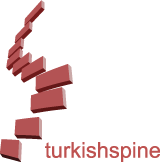ABSTRACT
Purpose:
Analyze the prevalence of sacral screw loosening following posterior long segment instrumentation and fusion in adult spine.
Material methods:
66 patients who were diagnosed with adult spinal deformity with L5-S1 degeneration and treated using posterior instrumentation and PL or interbody fusion in our institute between 2003-2008 were included in the study. Anterior-posterior projection and lateral lumbosacral and CT projections were used for radiologic evaluation of patients. Patients were reviewed retrospectively under two groups: interbody fusion and posterolateral (PL) fusion. Standard lumbosacral X- ray was performed to evaluate pseudo arthrosis or sacral pedicle screw loosening. Preoperative and postoperative VAS scores were measured for functional assessment.
Results:
Patients age were 69.1 (37-89) and mean follow-up was 8.8 years (6-11 years). 48 patients had degenerative spinal deformity and 18 patients had degenerative spondylolisthesis. We applied posterior instrumentation with posterolateral fusion in 50 patients and posterior instrumentation with interbody fusion in 16 patients. All procedure included L5-S1 segment. Level of posterior instrumentation mean was 5.9 (4-11). In PL fusion group 12 patients had sacral screw failure (24%) but no sacral screw failure in interbody fusion group (p<0,005). VAS scores increased in both groups but in interbody fusion decrease was more prominent than PL fusion group (p < 0,05)
Conclusion:
Interbody fusion of L5-S1 disc area for treatment of degenerative lumbar disease in patients with L5-S1 degeneration results positively on survival of the sacral pedicle screws.



